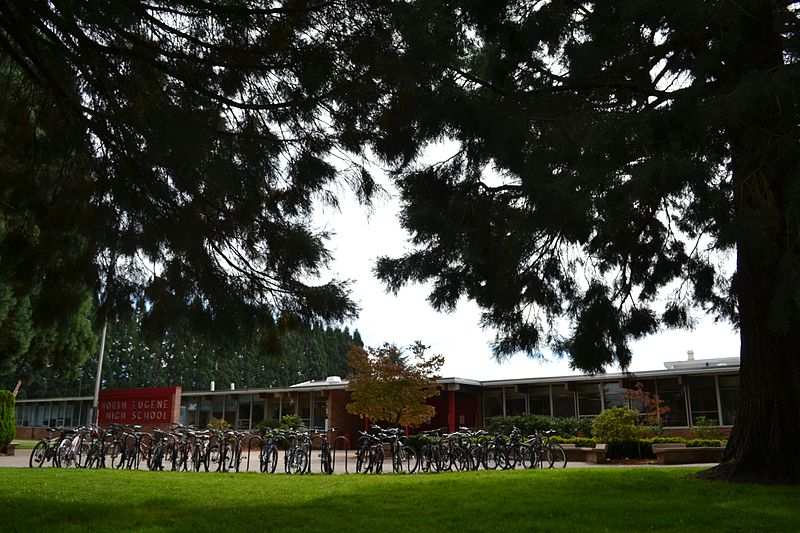Imagine trying to learn calculus in an over-populated classroom in high school. You’re sitting next to some boys who just got back from PE and decided to skip the showers. With a schoolwide ban on perfumes, the smell can’t be masked. It’s just unadulterated body odor emanating.
That’s the reality of Emma Burnstein, a student at North Eugene High School. Sitting in either Spanish or calculus, she said she not only struggles to get teacher assistance, but has to sit in close quarters in the classroom.
Yes for 4J Schools, a political activity committee, held a press conference to kick off a campaign to drum up local support for the 4J school bond measure that asks voters for $319.5 million. It’s the largest ask the Eugene 4J School district has ever made, but supporters reiterated this financing is necessary to prepare 4J graduates for an ever-changing economy that awaits them.
Although the school district cannot make endorsements, the bond measure has received full support from each member of the 4J board of directors.
So far, Yes for 4J Schools has received more than $7,000 in campaign contributions, with $3,000 from Eugene Education Association according to the Oregon Secretary of State’s Office.
Money from the bond measure would only go toward improvements in the district, supporters say, since bond measures cannot go toward paying for staff salaries.
For North Eugene High School (NEHS), building improvements are far overdue. When Tad Shannon first started teaching in 4J, he taught at NEHS for eight years. That was 20 years ago, and it needed improvements back then, he tells EW.
Due to Measure 5, school districts have to depend on bond measures for capital improvements, Shannon says.
“Since Measure 5 passed, the local control over funding of schools has basically disappeared. It’s in the state,” he says. “Now the only way that local communities like Eugene can support schools is by passing bond measures to build buildings — not to hire teachers — and provide teachers with the best facilities to teach kids.”
Eugene Education Association will have members canvass for the bond measure, he says.
The bond measure will include money to work on the district’s career technical education (CTE) curriculum, which representatives of Lane County’s tech industry are excited about.
Matt Sayre, vice president of Technology Association of Oregon, said CTE gets kids interested in attending school.
He added that CTE gives students the tools to become software developers or network engineers. These skills will come in useful since the tech industry in Lane County will be creating thousands of new high-paying jobs.
“CTE helps students realize their full potential, escape poverty and become the next generation of problem solvers with mobility to move up the economic ladder,” he said.
Sabrina Parsons, a 4J parent and CEO of Palo Alto Software, said during the press conference that the measure bond would update the school district’s infrastructure that will also help students learn the tools that can keep students in Eugene rather than losing a job force
“I want to hire kids who’ve gone through 4J, gone on to OSU or UO,” she said. “In order to have the type of background we need for tech, they need to be doing math and science in a very strong way to prepare them for computer science and innovative tech programs.”
But, she added, technology is a necessity for future jobs like truck drivers, an industry that is evolving to require a need to understand automation and data analysis.
If the bond measure passes, Burnstein won’t get to experience a new NEHS — or updated curriculum, as she will have long since graduated. But she doesn’t mind because her younger siblings will have a better education experience.
